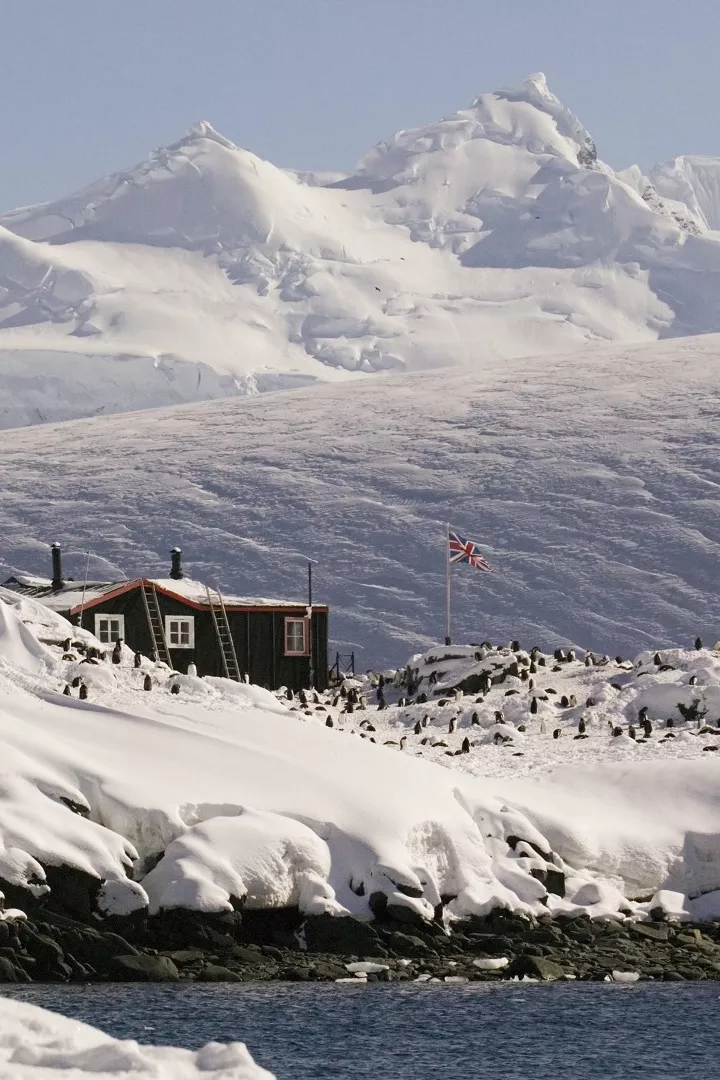

Must see attractions in Antarctica
No place on Earth compares to this vast white wilderness of elemental forces: snow, ice, water, rock. Antarctica is simply stunning.


Terra Nova Hut
Top choice Historic Hut in Cape Evans


Shackleton’s Hut
Top choice
Historic Hut in Cape Royds


Amundsen-Scott South Pole Station
Top choice
Base in South Pole
Whalers’ Cemetery
Cemetery in South Georgia
Bransfield House
Historic Building in Port Lockroy
Nordenskjöld Hut
Historic Site in Snow Hill Island
Lemaire Channel
Top choice
Gorge in Central Peninsula
Watch Next
Scott’s hut from the Terra Nova expedition is steeped in an incredible feeling of history.
Here, dog skeletons bleach on the sand in the Antarctic sun, evoking thoughts of Scott’s death march from the Pole.
Stand at the head of the wardroom table and recall the famous photo of Scott’s final birthday, with his men gathered around a huge meal and their banners hanging behind.
Photo: Handout
Shackleton erected this structure on his Nimrod expedition in February 1908.
Fifteen men lived in the hut, which is much smaller than Scott’s at Cape Evans, and the feeling inside is still very atmospheric.
All of Shackleton’s men left here alive (unlike at Scott’s hut), and apparently they left in a hurry: when members of the Terra Nova expedition visited in 1911, they found socks left hanging to dry and a meal still on the table.
Members of the Ross Sea party of Shackleton’s 1914–17 Endurance expedition also stopped by, commandeering tobacco and soap, among other treats.
Photo: Editor
The South Pole station was built in phases, so the first group of occupants was able to take up residence in January 2003, and it was officially inaugurated in January 2008.
Full summer operations began in October 2011.
The 6039-sq-meter, elevated station stretches 128m, facing the prevailing winds with an aeronautical design that helps scour snow from beneath it.
The complex accommodates 150 people in summer and 50 in winter.
Photo: Rodrigo Wen
Shackleton’s grave is the highlight of the whalers’ cemetery at Grytviken.
‘The Boss’ is buried at the left rear of the graveyard.
On the back of the granite headstone (engraved with the nine-pointed star that Shackleton used as a personal emblem) is one of his favorite quotations, from the work of poet Robert Browning: ‘I hold that a man should strive to the uttermost for his life’s set prize.’
There are 63 other graves here, several of which may belong to 19th-century sealers.
Photo: Sue Flood / Getty Images
Britain beautifully restored the original station building, Bransfield House, the main building of Base A, in 1996.
Displays on the station’s history hang inside.
Artifacts include clothing from Operation Tabarin, a clandestine 1944 radio transmitter, a wind-up HMV gramophone with Noel Coward 78rpm records, and wooden skis purchased from the Grytviken Whaling Station Stores on South Georgia in 1957.
A scientific highlight: a restored ‘Beastie’ (an early apparatus for upper-atmospheric research).
Photo: Brian Stetson / 500px Images
The Swedish South Polar Expedition’s prefabricated black-walled hut, the Antarctic Peninsula’s oldest remaining building, is a protected historic site.
This dwelling, in which five Swedish and one Argentine scientist spent an unplanned two years, sits on a fragile beach terrace easily eroded by footsteps.
The 6m-by-8m hut contains three double bunks, a kitchen and a central living room.
Two large metal signs in Spanish describe the site’s history, as do leaflets in English inside the hut.
Photo: Ralf Hettler / Getty Images
This steep-sided channel – just 1600m (5250ft) wide – runs for 11km (7 miles) between the mountains of Booth Island and the Peninsula.
So photogenic that it's been dubbed 'Kodak Gap,' the passageway is only visible once you're nearly inside it.
The channel was first navigated by the Belgian de Gerlache in 1898 and named after a Belgian explorer of the Congo.